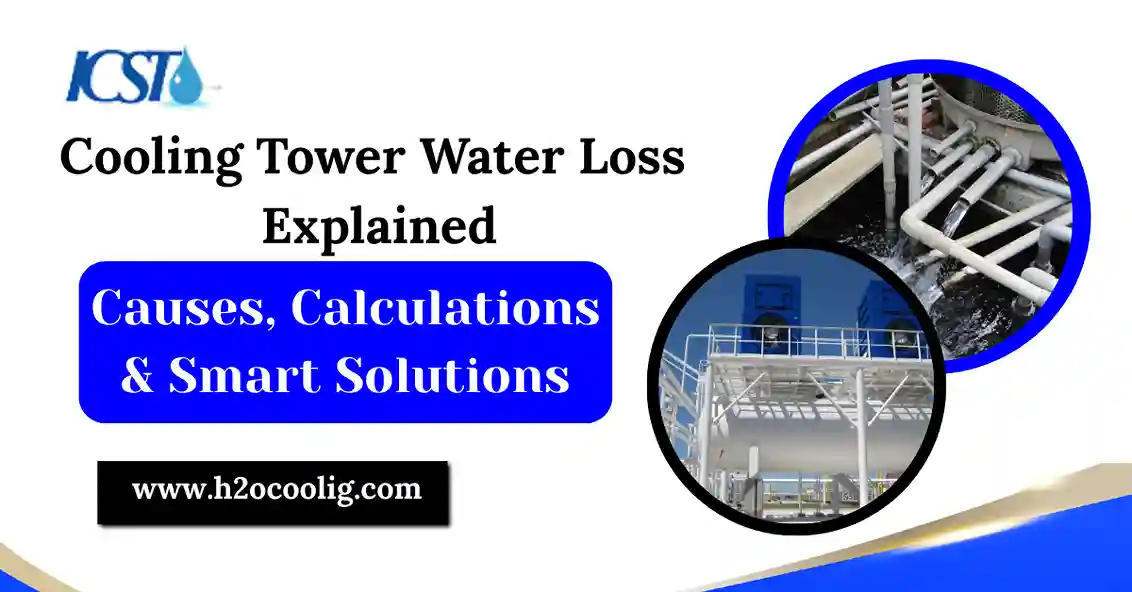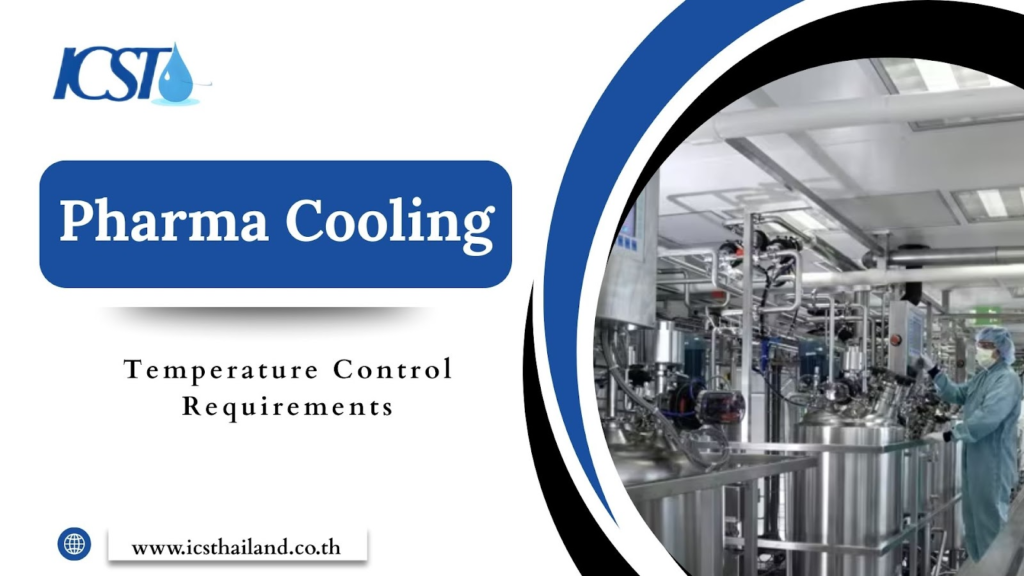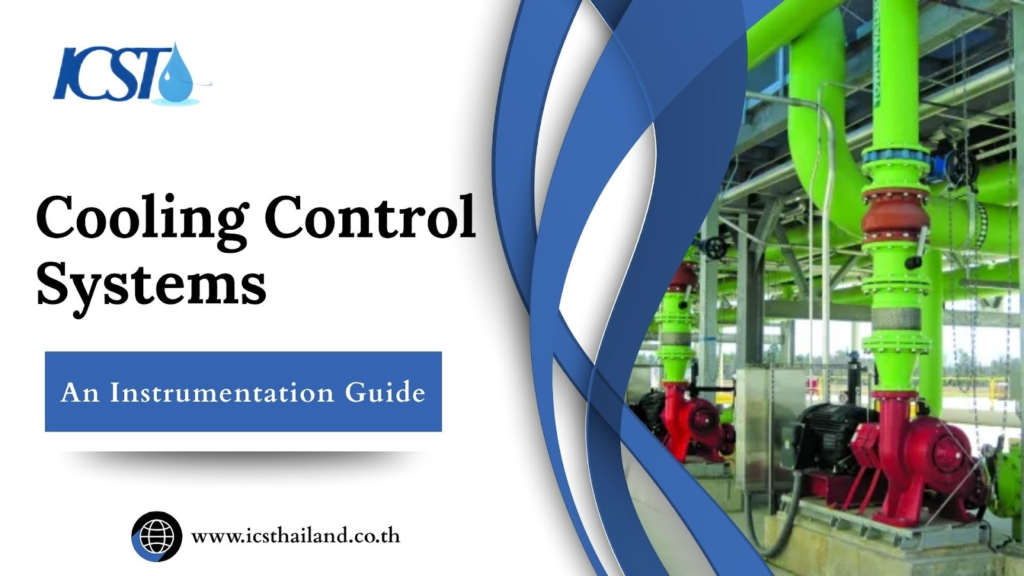Are your industrial cooling systems draining more water and money than you think? Could hidden inefficiencies in your processes be quietly driving up operational costs?
Having spent over a decade working on cooling tower operations, I’ve seen first-hand how much water inefficient cooling towers can waste. And trust me, those losses don’t just hit your utility bill; they also impact environmental resources and system efficiency.
Understanding where and why your cooling tower loses water working principle is crucial for reducing costs, prolonging equipment life, and supporting sustainable practices. Today, I’m going to walk you through the causes of cooling tower water loss, show you how to calculate it step by step, and share some smart solutions to maximize your cooling system’s efficiency.
Table of Contents
ToggleHow Cooling Towers Work
Cooling towers remove heat by evaporating water. Warm water from your facility’s process or HVAC system enters the tower, exchanges heat with the air via evaporation, and exits cooler than before.
But here’s the catch: evaporation, along with other factors, leads to water loss. Whether you’re concerned about rising water costs or improving your system’s sustainability, understanding this loss is your first step toward better efficiency.
Why You Should Care About Water Loss
Understanding your cooling tower’s water usage is about more than just managing your utility bills. It’s the key to identifying inefficiencies, extending equipment life, and staying environmentally responsible. One major factor to watch? Evaporation loss.
When water evaporates, it doesn’t just disappear—it leaves behind all the chemicals and contaminants that were in it. Over time, this buildup can wreak your system, leading to scale formation that slows down your cooling tower’s performance and increases maintenance costs.
Think of it like a clogged artery for your cooling system! If left unchecked, contaminated water can cause corrosion, reduce efficiency, and even shorten the lifespan of your equipment.
The solution? Regularly releasing wastewater through Blow Down to flush out impurities and replacing it with fresh Makeup Water. This simple step keeps your system running smoothly and efficiently, saving you time and money in the long run.
And here’s the good news: I’ve worked with clients who cut their cooling tower water losses by up to 25%. By grasping the causes and acting strategically, you can make a serious impact.
Types of Cooling Tower Water Loss
Did you know cooling towers lose water in three key ways? Let’s break it down step by step. Understanding this can help you save water and improve efficiency!
Evaporative loss refers to the water that evaporates during the cooling process, contributing significantly to overall water loss.
Moisture in the form of liquid droplets can also escape the system, adding to the total water loss.
1. Evaporation Loss
This is water that’s intentionally evaporated during the cooling process. As heat transfers to the air, water turns into vapor, helping to lower temperatures. This process is common in systems like cooling towers.
- How it happens: Heat energy converts circulating water into vapor. This process removes excess heat from the system, cooling the remaining water.
- Typical range: Evaporation accounts for 70%–85% of total water loss in cooling towers. This percentage can vary depending on environmental conditions like temperature and humidity.
- Why it matters: Evaporation is a critical component of the cooling process, ensuring efficient heat dissipation and system performance. The cooling water undergoes evaporation, which is a key mechanism for heat dissipation in the system.
2. Drift Loss
Drift loss occurs when water droplets get carried out of the cooling tower by air currents. These droplets escape through the exit airstream.
- How it happens: Poorly designed or damaged drift eliminators allow water droplets to escape into the air.
- Typical range: Drift typically makes up 0.1% to 0.3%, but damaged eliminators can drastically increase this percentage.
- Why it matters: While the percentage may seem small, drift loss can result in significant water and chemical usage over time. It can also contribute to environmental concerns if the droplets contain chemicals or contaminants from the cooling process.
3. Blowdown (Bleed-Off) Loss
Blowdown is the intentional discharge of a portion of recirculating water from a cooling tower to reduce concentration levels of impurities such as minerals, solids, and microorganisms. It happens when water containing high concentrations of dissolved solids is removed from the system to keep mineral scaling in check.
- Why it’s necessary: Blowdown is essential to prevent the buildup of minerals and contaminants in the system, which can lead to scaling, corrosion, or other damage to components. Blowdown is necessary to remove highly concentrated water that contains elevated levels of dissolved solids.
- Typical range: Blowdown losses generally range between 10%–25%, depending on the cycles of concentration (C.O.C.), which refer to the ratio of dissolved solids in the system water compared to fresh feedwater.
- Why it matters: Operating at a higher C.O.C. can significantly reduce blowdown loss, saving water and costs when done safely.
Cooling Tower Water Loss Calculations Table
| Type of Water Loss | Formula | Example Data | Calculation Steps | Result |
|---|---|---|---|---|
| Evaporation Loss | Evaporation Loss = 0.00085 × 1.8 × Flow Rate × (Th − Tc) | Flow Rate = 12,000 m³/h Th = 47°C Tc = 36°C | 0.00085 × 1.8 × 12,000 × (47-36) = 0.00085 × 1.8 × 12,000 × 11 | 202.68 m³/h |
| Drift Loss | Drift Loss = Drift % × Flow Rate | Flow Rate = 10,000 m³/h Drift Rate = 0.004% (0.00004) | 10,000 × 0.00004 | 0.4 m³/h |
| Blowdown Loss | Blowdown = Evaporation Loss / (C.O.C.-1) | Evaporation Loss = 202.68 kg/h C.O.C. = 4 1 kg water = 0.001 m³ | 202.68 / (4-1) = 67.56 kg/h 67.56 × 0.001 = 0.06756 m³/h | 0.06756 m³/h |
Key:
- Th = Hot Water Temperature (°C)
- Tc = Cold Water Temperature (°C)
- C.O.C. = Cycles of Concentration
Water Loss Calculations (With Examples)
Now that you know the types of water loss, how do you calculate the actual numbers? Here’s how: Start by identifying the source of the water loss and gathering any available data, such as usage reports or system performance metrics.
1. Evaporation Loss Formula
Evaporation Loss = 0.00085 x 1.8 x Flow Rate x (Th−Tc)
Where:
- 0.00085 = Empirical evaporation constant
- 1.8 = Conversion factor from °C to °F (for heat capacity)
- Flow Rate = Circulating Water Flow Rate (m³/hr)
- Th = Hot Water Temperature (°C)
- Tc = Cold Water Temperature (°C)
The specific heat of water is a critical factor in this calculation, influencing the amount of heat absorbed or released during the process.
Use the data from your cooling tower’s Data Sheet to calculate the water lost through evaporation.
For Example
If the system operates with a water flow rate of 12,000 m³/h, handling temperatures of 47°C for hot water and 36°C for cold water, its evaporation water loss would depend on factors like humidity and system efficiency.
Given data:
- Water flow rate = 12,000 m³/h
- Hot water temperature = 47°C
- Cold water temperature = 36°C
Calculation:
Water loss = 0.00085 × 1.8 × 12,000 × (47 – 36)
Water loss = 0.00085 × 1.8 × 12,000 × 11
Water loss =0.2027 m³/h (assuming a density of 1 kg/L or 1000 kg/m³)
Total Water Loss by Evaporation
This means that approximately 0.16% of the initial water flow is being lost through evaporation in this cooling tower system.
2. Drift Loss Formula
Drift Loss (m³/hr) = (Drift % x Circulating Flow Rate (m³/hr) / 100
Where:
- Drift Rate (%) is typically provided by the cooling tower manufacturer
- Circulating Flow Rate = Water circulating through the tower per hour
For Example
Imagine the following data from your cooling tower data sheet.
Given Data:
- Water Flow = 10,000 m³/hr
- Drift Loss Rate = 0.004% = 0.00004 (in decimal form)
Drift Loss = 10,000 × 0.00004
Drift Loss = 0.4 m³/hr
So, the drift loss is 0.4 m³/hr.
Total Water Loss by Drift Loss
This means that every hour, 0.4 m³ of water is lost due to drift from the cooling tower.
3. Blowdown Loss Formula
Blowdown (m³/hr) = Evaporation Loss / (C.O.C. – 1)
Where:
C.O.C. = Cycle of Concentration (ratio of dissolved solids in recirculating water to that in makeup water)
For Example
Given Data:
- Evaporation Loss = 202.68 kg/h
- Cycle of Concentration (C.O.C.) = 4
- 1 kg of water = 0.001 m³
Calculation:
Blowdown = Evaporation Loss / (C.O.C. – 1)
Blowdown = 202.68 / (4 – 1) = 202.68 / 3 = 67.56 kg/h
To convert kg/h to m³/h:
1 kg of water = 0.001 m³
Blowdown Loss= 67.56 × 0.001 = 0.06756 m³/h
Smart Ways to Reduce Cooling Tower Water Loss
The good news? While evaporation loss is a given, you can minimize drift and blowdown with the right strategies. Implementing these strategies can significantly reduce water losses and improve system efficiency. Here’s what I recommend:
1. Upgrade Your Drift Eliminators
Modern drift eliminators are designed to minimize water loss in cooling towers, reducing drift to as little as 0.001%. By effectively capturing and redirecting water droplets, they ensure water stays within the system, improving efficiency and reducing environmental impact..
2. Optimize Cycles of Concentration (C.O.C.)
Find the balance between water savings and scaling risk. Raising your C.O.C. safely can drastically cut blowdown loss.
- Monitor water quality regularly to prevent scaling.
- Use chemical treatments and real-time sensors to safely raise C.O.C. for better efficiency and lower water consumption.
- Implement automated controls for consistent monitoring.
- Conduct routine system inspections to ensure proper functioning.
3. Install Automated Water Treatment Systems
These systems adjust operations dynamically based on quality inputs, improving performance and ensuring sustainable cooling water usage.
Real-time monitoring ensures efficient water usage and reduces waste. Maintaining proper chemical balance prevents scaling and corrosion.
4. Invest in Regular Maintenance
Don’t underestimate the small things. A clogged nozzle or dirty fill can spike water loss without warning. Routine checks are key to reduce water losses. Clean components improve efficiency and extend equipment lifespan. Prioritize maintenance to avoid unexpected downtime and high repair costs.
5. Reuse & Recycle Water
Consider using greywater or treated wastewater as your makeup water source for sustainable operations.
Proper management of recirculated water can further enhance system efficiency and reduce water consumption. Recycling water reduces dependency on freshwater sources. Treated wastewater can meet operational needs without compromising quality. This approach supports environmental goals and cuts operational expenses.
How One Facility Saved 9,000 Gallons of Water Weekly
A facility I recently worked with achieved incredible results, reducing their water loss from 35,000 gallons per week to just 26,000 gallons. Here’s how we made it happen:
Before: The facility was struggling with outdated drift eliminators and inefficient cycles of concentration (C.O.C.), leading to significant water wastage.
What We Did:
- Replaced old, inefficient drift eliminators with high-performance models.
- Optimized the cycles of concentration from 2 to 4 for improved water efficiency.
- Introduced smart water treatment systems to monitor and manage usage.
- The plant was able to achieve significant water savings through targeted improvements.
The Impact:
- Saved 9,000 gallons of water every week.
- Reduced annual costs by $12,000.
Backed by proven methods and data-driven solutions, these changes demonstrate the power of targeted, strategic action for water conservation and cost savings.
The Path to a Water-Efficient, Cost-Efficient Cooling System
Cooling towers are essential, but poor management can drain resources and profits. At International Cooling Solution Thailand (ICST), we specialize in optimizing cooling tower efficiency to save water, energy, and costs—all while reducing environmental impact.
Did you know that small changes can make a big difference? By identifying water loss sources, performing regular audits, and using data-driven strategies, you can transform your cooling tower’s performance. Conducting a water audit at your site can help identify inefficiencies and areas for improvement.
Are you ready to enhance sustainability and savings? Let ICST tailor a solution that helps you conserve water, reduce costs, and maximize cooling tower efficiency. Contact us today for tailored strategies that keep your system cool, efficient, and eco-friendly.
Frequently Asked Questions
What is the best cooling tower type for tropical climates?
Counter flow cooling towers are the best choice for tropical climates due to their superior thermal efficiency, compact design, and ability to maintain performance in high heat and humidity.
Why do counter flow cooling towers perform better in humid environments?
Counter flow towers have vertical airflow opposite to water flow, maximizing heat exchange and maintaining cooling efficiency even when the air is hot and humid.
What are the main challenges for cooling towers in tropical regions?
Key challenges include high ambient temperatures, high humidity, increased risk of algae and microbial growth, corrosion from salty air, and frequent load fluctuations.
How does a compact cooling tower design benefit industrial sites in tropical areas?
A compact design saves valuable space, fits easily in urban or tight locations, and still delivers high cooling performance-ideal for dense or space-limited environments.
What maintenance practices are essential for cooling towers in tropical climates?
Regular cleaning to prevent algae and debris buildup, inspections for corrosion, and proper water treatment are crucial for reliable, efficient operation in hot and humid conditions.








